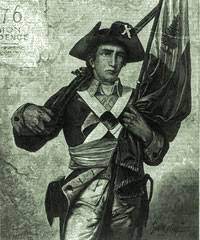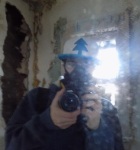The legacy of the controversial Montana State Orphanage is as enduring as it is hard to define. Some call it abusive and cruel, others say its existence was an unfortunate necessity. Even the orphans raised there were unsure what to make of their past as they weighed the abuse suffered versus the charity gained, so where should I begin to unpack such a complicated topic?
Making my task even more difficult was how little information exists online about the orphanage compared to most similarly sized institutions. Most original documents exist as undigitized copies held in the Montana Historical Society archives in Helena, which are closed for renovations until 2025. To further complicate matters, even if the archives were open to the public most of the records inside from the orphanage remain sealed by order of the state government because they concern children. Not one to be deterred in pursuit of historical fact, I spent days digging through online news archives and academic papers to scrape together enough information to pen a full write up, and my diligence was eventually rewarded. So perhaps the best place to start is, as they say, in the beginning.
In 1894, just five years after Montana entered the Union, the newly-formed Montana State Legislature decided that the freshly minted state needed an orphanage. Though Montana had several private orphanages run by churches, up until that year no similar state-run institution existed. And so, the Montana State Orphanage opened its doors in the town of Twin Bridges to the destitute and unfortunate children of its constituents. The orphanage started out as a singular Victorian-style mansion nicknamed “The Castle” but quickly expanded, and eventually grew to encompass 26 buildings spread over more than a hundred acres of land just across the river from town.
 Figure 1: The exterior of The Castle. As the orphanage grew this eventually became the Administration Building and staff quarters.
Figure 1: The exterior of The Castle. As the orphanage grew this eventually became the Administration Building and staff quarters.  Figure 2: Interior room in the Administration Building. Besides containing offices and storage, the upper floors also housed staff who lived on site around the clock.
Figure 2: Interior room in the Administration Building. Besides containing offices and storage, the upper floors also housed staff who lived on site around the clock.  Figure 3: Another room inside Administration Building decorated with rustic bark on the walls. Though this building originally did house children, they were eventually moved over to dedicated dormitories as the orphanage expanded.
Figure 3: Another room inside Administration Building decorated with rustic bark on the walls. Though this building originally did house children, they were eventually moved over to dedicated dormitories as the orphanage expanded.  Figure 4: The front doors and main entrance hallway to the Administration Building.
Figure 4: The front doors and main entrance hallway to the Administration Building. From its very inception the Montana State Orphanage was steeped in controversy. In 1900 there were more than a thousand orphanages housing upwards of 100,000 children nationwide, but most functioned more like a prison than a home for children. It was believed during this time period that poverty and crime were hereditary traits that required a firm hand to correct, so children in these orphanages were frequently called “inmates” and treated as such. Strictly regimented schedules, harsh corporal punishment, low quality food, an utter lack of privacy, and hard manual labor were all common components of orphanage life. Many of these children weren’t even true orphans, but rather “poverty orphans” with still-living parents who were too destitute to provide for them. With no other social programs in existence during this time period many poor families faced the impossible choice of surrendering their children to the State or watching them starve.
Progressive reformists during the early twentieth century decried the conditions found in these orphanages as dehumanizing and abusive, and they argued that the orphanage model of childcare did not provide for the emotional needs of the children. As early as 1916 some of the first women elected to the Montana State Legislature pushed for alternatives such as the adoption of the foster care system and the establishment of welfare pensions for single mothers. This was one of the first battles in the long war for the deinstitutionalization of America, which later saw the closure of other institutions such as asylums, poorhouses, and sanatoriums. This movement is commonly associated with the closure of the asylums in the 1960s but actually started decades earlier. Orphanages made politically convenient initial targets for reformers because advocating for the wellbeing of children was an easy sell.
 Figure 5: The main staircase of the Administration Building, constructed in a manner reminiscent of a grand staircase.
Figure 5: The main staircase of the Administration Building, constructed in a manner reminiscent of a grand staircase.  Figure 6: One of the tasks carried out in the Administration Building was the sorting of the mail in this mailroom. Matrons would screen incoming and outgoing mail and intercept any letters that didn’t meet with their approval.
Figure 6: One of the tasks carried out in the Administration Building was the sorting of the mail in this mailroom. Matrons would screen incoming and outgoing mail and intercept any letters that didn’t meet with their approval.  Figure 7: The Administration Building also featured one of the stranger fire escapes I’ve seen. This spiral metal slide ran from the top of the building to the ground and was clearly sized for children, but every other building that had a fire escape had a normal exterior metal staircase.
Figure 7: The Administration Building also featured one of the stranger fire escapes I’ve seen. This spiral metal slide ran from the top of the building to the ground and was clearly sized for children, but every other building that had a fire escape had a normal exterior metal staircase.  Figure 8: The entrance to the spiral slide fire escape from the previous figure. This seemed a bit odd because the only other places I’ve ever encountered fire escape slides were in munition factories where speed was of the utmost importance in case explosive material caught fire, but of course that wouldn’t be a concern in an orphanage.
Figure 8: The entrance to the spiral slide fire escape from the previous figure. This seemed a bit odd because the only other places I’ve ever encountered fire escape slides were in munition factories where speed was of the utmost importance in case explosive material caught fire, but of course that wouldn’t be a concern in an orphanage. Though America was already moving away from the orphanage system as early as 1910, it would be decades before the reformists’ vision of deinstitutionalization came to pass- and in the meantime, life at the Montana State Orphanage continued much as it did in other orphanages around the country. Children were housed in a cottage-style campus, split by age and gender across seven dormitories that resembled barracks with their lack of privacy and large communal bedrooms. Though sources are few, by far the best account of daily life at the Montana State Orphanage comes from the diary of a boy named Noel Freedman, which he published later in life under the title “DUMPED: Woman leaves her six kids in the Court House, for the State to baby sit.” Freedman maintained a regular account of his life from 1941 when he entered the care of the orphanage until his graduation from the institution in 1945.
Upon first arriving at the Montana State Orphanage children were kept in quarantine for two weeks to ensure that they did not introduce disease to the general population. The medical staff were very authoritarian, and children were forced to stay in bed for the entire two weeks. In Freedman’s book, another orphan recollects one occurrence when he left his bed without permission during this quarantine and was beaten with a switch by the nurse until she exhausted herself. The doctor wasn’t much better, and this introduction to the orphanage’s medical system was so unpleasant that he learned early on to hide injuries and avoid the hospital at any cost- a lesson which later cost him his hearing, among other ailments. Once medically cleared to join the other 200-300 residents of the orphanage, life didn’t improve by much.
 Figure 9: Moler Memorial Hospital, the small infirmary where new children were quarantined and where most medical care was provided. The orphanage had a full-time nurse and was frequented by both the town doctor and dentist as needed.
Figure 9: Moler Memorial Hospital, the small infirmary where new children were quarantined and where most medical care was provided. The orphanage had a full-time nurse and was frequented by both the town doctor and dentist as needed.  Figure 10: The cottage-style dorms children lived in. There were seven of these buildings in total, four for boys and three for girls. Most children were given a nickname by their dorm-mates based off an attribute of some kind. Some examples included Nerd, Fat, Scars, and Red Sails (big red ears) for appearance, or Sticky Fingers, Crybaby, Leaky (bedwetter), and Wanderlust for behaviors. Freedman recounts one instance where a particularly unfortunate boy gained the nickname Public Enema Number One after a long battle with chronic diarrhea.
Figure 10: The cottage-style dorms children lived in. There were seven of these buildings in total, four for boys and three for girls. Most children were given a nickname by their dorm-mates based off an attribute of some kind. Some examples included Nerd, Fat, Scars, and Red Sails (big red ears) for appearance, or Sticky Fingers, Crybaby, Leaky (bedwetter), and Wanderlust for behaviors. Freedman recounts one instance where a particularly unfortunate boy gained the nickname Public Enema Number One after a long battle with chronic diarrhea.  Figure 11: The paint colors used inside the dorms were carefully chosen to convey cheery and soothing emotions. It was believed that emotional color associations were especially important to mentally disturbed children and that bright blues, pinks, and yellows could hasten their readjustment to society.
Figure 11: The paint colors used inside the dorms were carefully chosen to convey cheery and soothing emotions. It was believed that emotional color associations were especially important to mentally disturbed children and that bright blues, pinks, and yellows could hasten their readjustment to society.  Figure 12: A stack of study material left behind in the dorms. When the orphanage shut down everything was left behind as the staff “literally locked the doors and walked,” but most of the items inside the buildings were gradually cleared out by various private owners over the years following its closure.
Figure 12: A stack of study material left behind in the dorms. When the orphanage shut down everything was left behind as the staff “literally locked the doors and walked,” but most of the items inside the buildings were gradually cleared out by various private owners over the years following its closure. The orphanage staff were extremely strict and discipline was dispensed with both swiftness and brutality. Corporal punishment started with slaps across the face and whippings with a belt, but quickly escalated to punches and beatings with rubber hoses. Freedman recalls one incident in which he was beaten by a teacher with a homemade wooden club until the club broke, simply for talking out of turn. Bed wetting was a common problem among the traumatized children, and every morning the matrons would inspect the dorms at 6am and publicly beat bed-wetters with a willow switch. In an effort to avoid a beating, bed-wetters would often get up to dry their bedsheets on the radiators at 5am when the heat turned on. Other common punishments included being hung on coat hooks by their shirts, being locked in closets for long periods of time, and being forced to work in the cold with inadequate winter gear until they passed out, upon which they were beaten awake.
When a culprit or scapegoat could not be found for an infraction, the matrons often used a form of collective punishment called Sitting on Silence in which silence was violently enforced for weeks at a time until someone confessed. Oftentimes an innocent party would martyr themselves and take both the blame and the beating just to end the silence. The staff were so brutal in their punishments that when one elderly matron died, Freedman wrote that all the orphans loudly cheered until being cowed into silence by the other matrons. Though poverty orphans did occasionally receive letters from family, those letters were often intercepted by the matrons before reaching their intended recipient to “avoid getting their hopes up” about being reclaimed. The orphans did have one ally, the elderly watchman who snuck them scraps to feed their pets. Unfortunately, after the children laughed at him when he took a bad fall while ice skating, the watchman turned on them and began drowning their pets in the river for revenge instead.
 Figure 13: A main hallway inside one of the dormitories. The typical layout for cottage-style dorms included several sleeping areas, a recreation/living room, a communal bathroom, and a bedroom for a counselor/matron who would live in the cottage to supervise the children around the clock.
Figure 13: A main hallway inside one of the dormitories. The typical layout for cottage-style dorms included several sleeping areas, a recreation/living room, a communal bathroom, and a bedroom for a counselor/matron who would live in the cottage to supervise the children around the clock.  Figure 14: One of the sleeping areas in a cottage dorm. An architectural study from 1970 claims that a space this size would be shared between four children, but it’s probable that number was much higher when the orphanage’s population was at its peak. Due to the extremely limited amount of space on the radiators to dry wet bedsheets, early morning fistfights were common between children desperate to avoid a beating at the hands of the matrons.
Figure 14: One of the sleeping areas in a cottage dorm. An architectural study from 1970 claims that a space this size would be shared between four children, but it’s probable that number was much higher when the orphanage’s population was at its peak. Due to the extremely limited amount of space on the radiators to dry wet bedsheets, early morning fistfights were common between children desperate to avoid a beating at the hands of the matrons.  Figure 15: Another cottage sleeping area, this one was used as a nursery. Older children were conscripted as nursemaids for infants to reduce the amount of staff labor required to run the orphanage. Even the infants were violently disciplined, though the staff restricted themselves to light spankings before graduating ping pong paddles at the age of two.
Figure 15: Another cottage sleeping area, this one was used as a nursery. Older children were conscripted as nursemaids for infants to reduce the amount of staff labor required to run the orphanage. Even the infants were violently disciplined, though the staff restricted themselves to light spankings before graduating ping pong paddles at the age of two.  Figure 16: The exterior of one of the largest cottage dormitories. This one was likely built later than most of the others, given that it is larger and is constructed in a similar but slightly different style.
Figure 16: The exterior of one of the largest cottage dormitories. This one was likely built later than most of the others, given that it is larger and is constructed in a similar but slightly different style. When he wasn’t avoiding beatings, Freedman spent most of his time either working or studying. From the age of five onwards children were used as free labor to keep the orphanage running. The orphanage had its own steam plant and crop-producing farm, so orphans worked as nursemaids, dishwashers, farmers, janitors, butchers, stable-hands and coal-shovelers. The orphanage was nearly self-sustaining, run almost entirely on unpaid child labor. Younger children were educated up through eighth grade at the orphanage school before being transferred to the Twin Bridges High School to finish their education. Though older children were often rented out to families in town as indentured servants and trade apprentices to learn marketable skills, the most common job for an orphan upon reaching adulthood was dishwashing until they could teach themselves something better.
In its early years the Montana State Orphanage was the favorite charity project of the Copper Kings from the nearby city of Butte. From the late 1880s to 1907 three copper barons waged an economic, political, and sometimes literal battle for control of the American copper industry known as the War of the Copper Kings. This conflict would be won by the fourth player in a war between three kings, the Anaconda Copper Mining Company. The tendencies of these four players to sling mud in local newspapers, bribe politicians, murder labor organizers, and occasionally crash the entire national economy generated no small amount of bad press, so donating to the orphanage as a philanthropic gesture was an easy way to regain some goodwill with the public. Donations from the original three Copper Kings built luxuries most orphanages lacked such as the gymnasium, indoor pool, and auditorium/movie theater. The Anaconda Copper Mining Company continued this practice well into the twentieth century by purchasing Christmas presents for all the orphans every December.
 Figure 17: One form of punishment the staff liked to use during the weekly movie nights was to force a misbehaving child to sit in the auditorium facing backwards so they could hear but not see what was happening on screen, while their peers were allowed to sit facing forwards and watch the movie. Clever children positioned themselves next to classmates who wore glasses so that they could watch the movie in the reflection on their lenses.
Figure 17: One form of punishment the staff liked to use during the weekly movie nights was to force a misbehaving child to sit in the auditorium facing backwards so they could hear but not see what was happening on screen, while their peers were allowed to sit facing forwards and watch the movie. Clever children positioned themselves next to classmates who wore glasses so that they could watch the movie in the reflection on their lenses.  Figure 18: Not many orphanages had their own movie theater projector. Films such as Gone With The Wind, The Three Stooges, and Tarzan were popular showings.
Figure 18: Not many orphanages had their own movie theater projector. Films such as Gone With The Wind, The Three Stooges, and Tarzan were popular showings.  Figure 19: The Recreation Center/ gymnasium was another amenity purchased with copper baron philanthropy money. The Montana State Orphanage had traveling youth basketball, baseball, and softball teams that often took trips to away games. They usually performed well because, generally speaking, most of the orphans were in better physical shape than their non-orphan counterparts due to the constant manual labor and strictly controlled diet.
Figure 19: The Recreation Center/ gymnasium was another amenity purchased with copper baron philanthropy money. The Montana State Orphanage had traveling youth basketball, baseball, and softball teams that often took trips to away games. They usually performed well because, generally speaking, most of the orphans were in better physical shape than their non-orphan counterparts due to the constant manual labor and strictly controlled diet.  Figure 20: This 40 foot long indoor swimming pool attached to the gymnasium was a third unusual luxury bought by copper baron donations. However, this one wasn’t entirely philanthropic in nature; the orphanage staff ensured all children knew how to swim explicitly to better prepare them for potentially getting drafted into the US Navy upon graduation, though this reasoning may have only existed during the wartime years.
Figure 20: This 40 foot long indoor swimming pool attached to the gymnasium was a third unusual luxury bought by copper baron donations. However, this one wasn’t entirely philanthropic in nature; the orphanage staff ensured all children knew how to swim explicitly to better prepare them for potentially getting drafted into the US Navy upon graduation, though this reasoning may have only existed during the wartime years. Freedman’s recollections weren’t all bad, however. Recreational activities included camp-outs and hikes, while the orphanage had its own baseball and basketball teams. Every Sunday was movie night in the school auditorium, and many children spent their free time fishing down at the river. Though bullying ran rampant, Freedman fondly recalls the close friends he played games with during his stay at the orphanage. One favorite activity for orphans who’d had enough of the beatings was plotting escapes. Runaway attempts were common, though most didn’t make it far due to the difficulty of crossing the remote Montana wilderness. A few, however, managed to make the perilous journey. Freedman recalls several incidents of runaways reuniting with their families only to be returned to the orphanage by their parents. For other children who managed to reach their family home any reunion, however brief, was denied to them as they discovered that their families had moved away without them and left no forwarding address. Although most who tried to escape failed, some did manage to survive on their own. Alumni from the orphanage would occasionally smuggle in letters from successful runaways who managed to reach the coast.
By the time Freedman was seventeen the military had decided to draft all orphans approaching adulthood for the war effort. Drill sergeants arrived at the orphanage to put the older boys through boot camp, but found to their surprise that many of the boys actually considered it to be a far more relaxing and luxurious experience than daily life at the orphanage- the food was better, the drill sergeants weren’t allowed to beat them, and they were already used to following orders. But World War II came to an end before Freedman could be sent overseas, and in 1945 Freedman turned eighteen and graduated from the Montana State Orphanage. In typical fashion, he was given a set of new clothes, a small bag of toiletries, and whatever few keepsakes he could carry before being turned out onto the street with little else to his name. He quickly took up work as a dishwasher in Seattle to support himself before finding his feet and living a long and successful life, which he later credited to the charity and teachings imparted by the orphanage.
 Figure 21: The school was originally a two room schoolhouse that was separate from the theater, but major expansions in the 1940s merged both into a single building and added an additional eight classrooms.
Figure 21: The school was originally a two room schoolhouse that was separate from the theater, but major expansions in the 1940s merged both into a single building and added an additional eight classrooms.  Figure 22: A science classroom in the school. Though they had no money, the schoolchildren at the orphanage managed a complex barter economy with currency such as sweets, favors, desirable chores, trinkets, and even small pets.
Figure 22: A science classroom in the school. Though they had no money, the schoolchildren at the orphanage managed a complex barter economy with currency such as sweets, favors, desirable chores, trinkets, and even small pets.  Figure 23: Another classroom in the school. One of the most frequent sentiments in Freedman’s recollections was a persistent desire to get out of the orphanage, one shared by many of his peers. Upon graduation most children departed the day they turned eighteen and didn’t look back, though there were always a few who stuck around because they had been raised in the orphanage since infancy and had trouble adjusting to the outside world.
Figure 23: Another classroom in the school. One of the most frequent sentiments in Freedman’s recollections was a persistent desire to get out of the orphanage, one shared by many of his peers. Upon graduation most children departed the day they turned eighteen and didn’t look back, though there were always a few who stuck around because they had been raised in the orphanage since infancy and had trouble adjusting to the outside world. After World War II the Montana State Orphanage began to see a steady decline in enrollment. The welfare programs enacted during the Great Depression as part of the New Deal and a continuous push from Progressive reformers towards the foster care model led to a declining need for orphanages. Eventually the Montana State Orphanage evolved into less of a long-term care facility and more of a “waystation” to rehabilitate particularly troubled children on their way to foster homes. The post-war economic boom further reduced the occurrence of “poverty orphans,” and the orphan-run farm stopped operating in the 1950s due to more stringent child labor laws. An academic paper published in 1970 further called the usefulness of the campus into question as several aging buildings had been damaged by an earthquake and would take large sums of money to repair. The researcher also emphasized a consistent downward trend in enrollment that would eventually make such repairs pointless. This decline continued over the years and by 1975 there were only fifty children left at the orphanage.
It's worth noting that by this time period the majority of those fifty were Native American children. Orphanages, like asylums and residential schools, were used to perpetuate the genocide against Native Americans by taking children from their families while they were young, literally beating their cultural heritage out of them, and raising them in white protestant culture. A common saying attributed to this practice was “kill the Indian, save the man,” and this practice was also used against Jewish children and other minorities. Institutes such as the Montana State Orphanage were used to carry out this cultural genocide on a nationwide scale. When studying the history of American institutionalization, the atrocities it perpetuated must be acknowledged.
The orphanage was variably known as the Montana State Orphanage, the Montana State Orphan’s Home, and later as the Montana Children’s Center. In 1975 the Montana State Legislature ordered the closure of the orphanage due to budget cuts and its replacement by the foster care system. In its 81 years of operation, over five thousand children passed through its halls. Ninety-two of those children died in the care of the orphanage, though it remains unclear how much of the responsibility for their deaths lies with the brutality of the staff and how much of it was simply due to the high infant mortality rate and poor medical standards of the time.
 Figure 24: The boiler room in the steam plant that supplied heat to the entire orphanage campus in the winter. The steam plant foreman fancied himself an expert fisherman and was fond of offering unsolicited advice to children who were fishing down by the river. The children supplied themselves with fishing gear by begging hooks and line from locals, and if they caught anything worth eating the short-tempered cook would usually fry it up for them.
Figure 24: The boiler room in the steam plant that supplied heat to the entire orphanage campus in the winter. The steam plant foreman fancied himself an expert fisherman and was fond of offering unsolicited advice to children who were fishing down by the river. The children supplied themselves with fishing gear by begging hooks and line from locals, and if they caught anything worth eating the short-tempered cook would usually fry it up for them.  Figure 25: The exterior of the steam plant. Orphans would often be conscripted to help shovel coal in the winter, and Freedman recounted one pyromaniacal child nicknamed Scars who often volunteered for coal-shoveling duty just so he could be close to the fire. A cigarette smoker from the age of five because he liked the flame, Scars was infamous among the orphans for his obsession- he started out by burning the initials of the State Orphans’ Home (SOH) upon every available surface with a branding iron, but he quickly escalated to reckless stunts such as making a methane bomb out of a pig manure barrel and electrocuting himself by shorting out the high voltage power lines while trying to recreate Ben Franklin’s famous lightning kite experiment.
Figure 25: The exterior of the steam plant. Orphans would often be conscripted to help shovel coal in the winter, and Freedman recounted one pyromaniacal child nicknamed Scars who often volunteered for coal-shoveling duty just so he could be close to the fire. A cigarette smoker from the age of five because he liked the flame, Scars was infamous among the orphans for his obsession- he started out by burning the initials of the State Orphans’ Home (SOH) upon every available surface with a branding iron, but he quickly escalated to reckless stunts such as making a methane bomb out of a pig manure barrel and electrocuting himself by shorting out the high voltage power lines while trying to recreate Ben Franklin’s famous lightning kite experiment.  Figure 26: A close up of one of the steam plant boilers. Scars was also usually on burn barrel duty to dispose of paper waste, and he liked to swipe interesting letters from the barrels. In one damning letter that he rescued from the flames, the writer (another orphan) confessed to shooting the sheriff in the head while poaching. He was never caught because the sheriff got tangled in his stirrups and was repeatedly kicked in the head as he hung off the back of his horse; the damage from the hoof-blows was so severe that it hid the gunshot wound and, lacking witnesses, all the townsfolk assumed it was an accident.
Figure 26: A close up of one of the steam plant boilers. Scars was also usually on burn barrel duty to dispose of paper waste, and he liked to swipe interesting letters from the barrels. In one damning letter that he rescued from the flames, the writer (another orphan) confessed to shooting the sheriff in the head while poaching. He was never caught because the sheriff got tangled in his stirrups and was repeatedly kicked in the head as he hung off the back of his horse; the damage from the hoof-blows was so severe that it hid the gunshot wound and, lacking witnesses, all the townsfolk assumed it was an accident.  Figure 27:The steam plant also had a workshop attached to it, as well as a larger dedicated workshop building nearby. Simple tools, livestock equipment, and other items were manufactured and repaired by orphans at these workshops to help keep the orphanage mostly self-sufficient.
Figure 27:The steam plant also had a workshop attached to it, as well as a larger dedicated workshop building nearby. Simple tools, livestock equipment, and other items were manufactured and repaired by orphans at these workshops to help keep the orphanage mostly self-sufficient. In the mid-1990s Congressman and future Vice President Newt Gingrich called for a return of the orphanage system as a budget cutting measure. This suggestion coincided with a reunion at the orphanage in 1995, where over 400 of the children raised there- now adults- congregated to discuss their past. Some of the former children thought the orphanage model was viable if reforms were put in place, but most agreed that it was unfixable. Separation from siblings, abuse, and isolation from still-living family were all cited as systematic failures of the Montana State Orphanage. “Ask a hundred orphans and each would have a different opinion,” Freedman said. He believed that the orphanage prepared him well for adult life, and any excessive discipline was done with good intentions out of ignorance. One of his fellow classmates was not so charitable and recalled, “I wouldn’t live my childhood over for anything. I didn’t know the meaning of love.” The debate over whether the abuse suffered was worth the food, shelter, and education gained is one in which the former residents never reached a consensus on.
The orphanage was bought by a private owner in 1985 and changed hands several times over the following decades. In 2005 it was purchased by a tough, no-nonsense woman named Leslie Adams. She moved into one of the staff houses in the center of the campus and has since spent $1.5 million to replace the roofs on fifteen buildings, remove lead paint, and remove roughly one and a half metric tons of pigeon feces from campus. Though Adams had several different ideas on how to repurpose the orphanage, including as a strip mall, RV park, bed and breakfast, and a youth leadership school, all her plans ultimately fell through due to a lack of funding. As of 2023 the orphanage is once again up for sale. Between the lack of buyers and the exorbitant cost of demolition, the campus will likely continue to slowly rot away.
 Figure 29: An aerial shot of the orphanage campus, taken sometime between the late 1940s and the mid 1950s. The original image is from the Montana Historical Society with labeling added later by Aran.
Figure 29: An aerial shot of the orphanage campus, taken sometime between the late 1940s and the mid 1950s. The original image is from the Montana Historical Society with labeling added later by Aran. It was into the shadow of this legacy I stepped on a cold winter day. Adams had a firm reputation of not allowing ghost hunters, explorers, and other sightseers into the orphanage but I guess she wasn’t home, because I had no problem walking around the campus and into the various buildings. Despite its proximity to Twin Bridges and lack of locked doors, the campus remained almost entirely graffiti free- no doubt due to the efforts of Leslie Adams, before she evidently gave up on securing the property. It was a remarkably low-stress exploration for such a large campus, and I wandered freely for several hours while taking photos at my leisure without issue. The campus was pleasant and silent, the soft snow betraying no sign of the terror that once ruled there.
The story of the Montana State Orphanage is a complicated one. How do you define a legacy when even those who were part of it can’t agree what that legacy was? The Montana State Orphanage was abusive. It tortured children into compliance, exploited them for free labor, and contributed to a cultural genocide. The Montana State Orphanage was necessary. It saved children from starvation and provided them with an education and a future when their families couldn’t. Perhaps both can be true. But now the Montana State Orphanage is closed. Whatever good it did, whatever harm, it is a relic of a past with no place in the future. Never again will starving orphans be fed there, and never again will the matrons beat them.
All that remains are empty buildings, a legacy, and a question.
-------------------------------------------------------------------------------
Sources :
John Hopkins Magazine: The Rise and Demise of the American OrphanageMontana Historical Society: There’s No Place Like Home; The Role of the Montana State OrphanageFreedman, Noel: DUMPED; Woman leaves her six kids in the Court House, for the State to baby sitDistinctly Montana; Montana Children’s Center in Twin Bridges, A CompendiumSeattle Times: Memories Of The Orphanage- Two Men Relive Their Days At A Montana Home And Give New Insight Into A National DebateCamarda, Joseph J: Cottage Living Units and An Administration Building for The Montana Children’s Center At Twin Bridges; Undergraduate Thesis In Architectural DesignBerkshire Hathaway Homeservices: Montana Children’s CenterMontana Standard: Orphan’s Home BoughtMontana Standard: New Life For OrphanageBozeman Daily Chronicle: A Place Where History Stands StillFindagrave.com: Montana State Orphanage Virtual Cemetery Written by Aran, 2023. Special thanks to Hill Ess, Grimm, and Cryptocartography from the Bureau of Exploration for their help with editing and proofreading. 









































